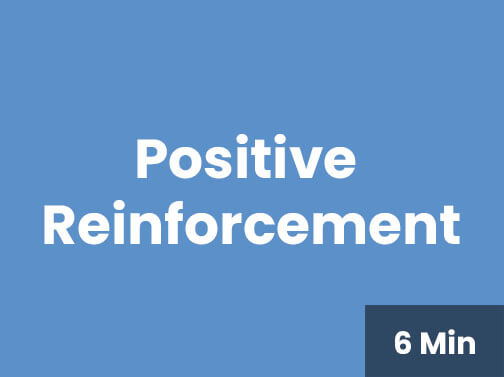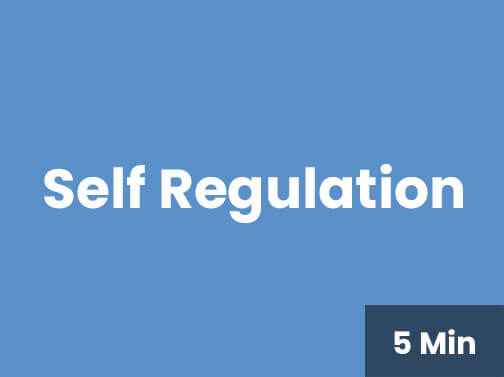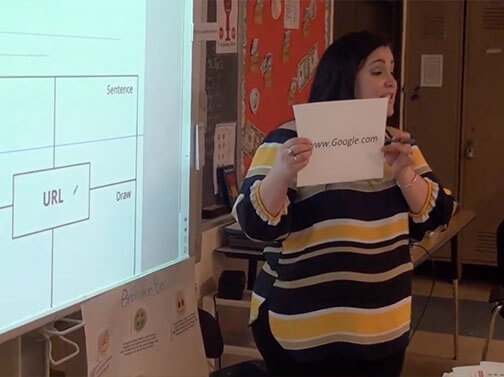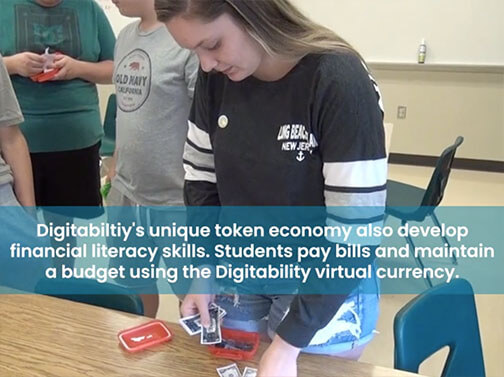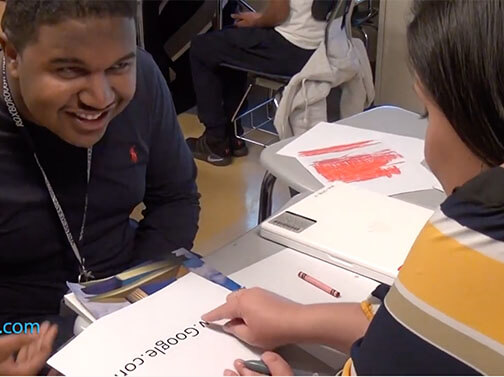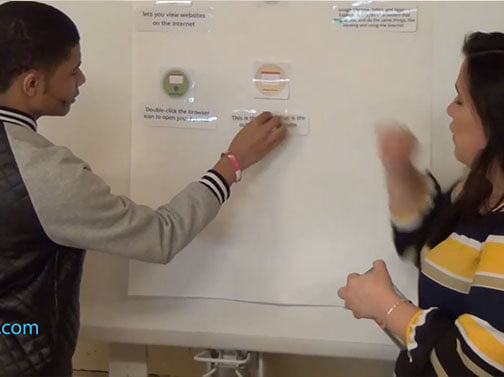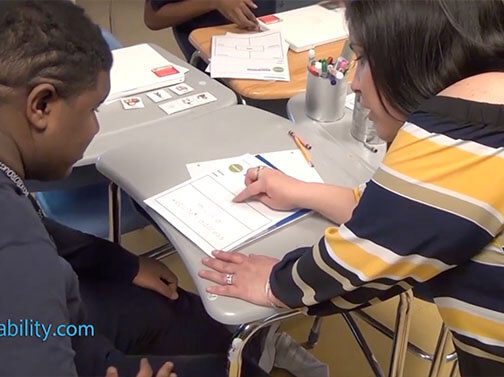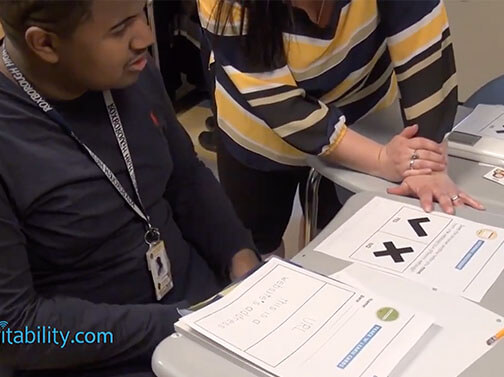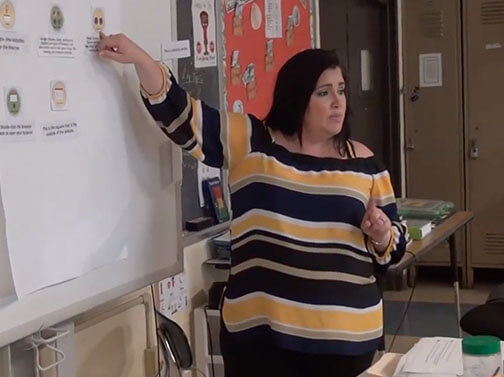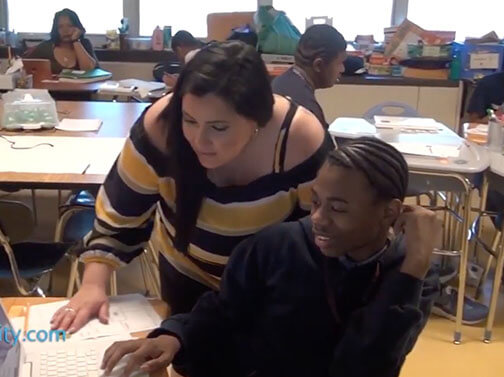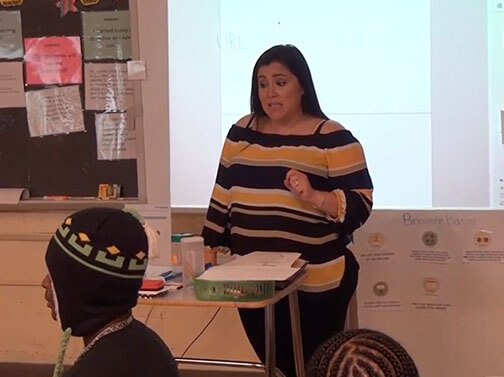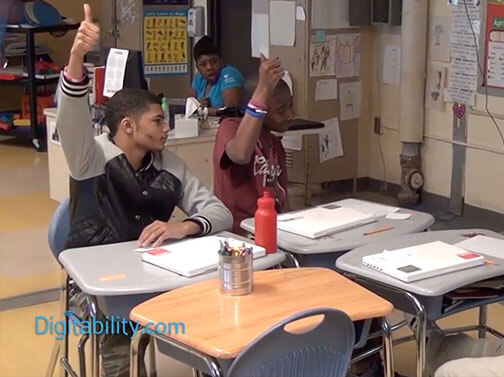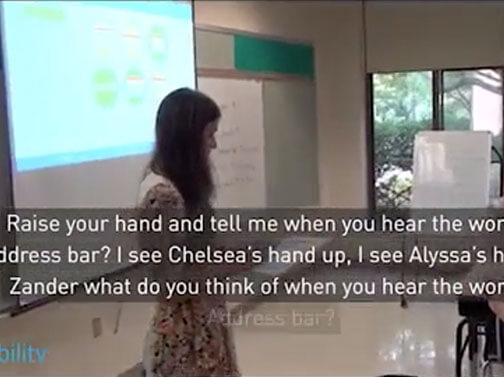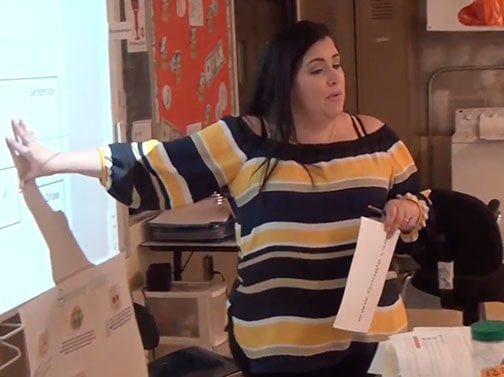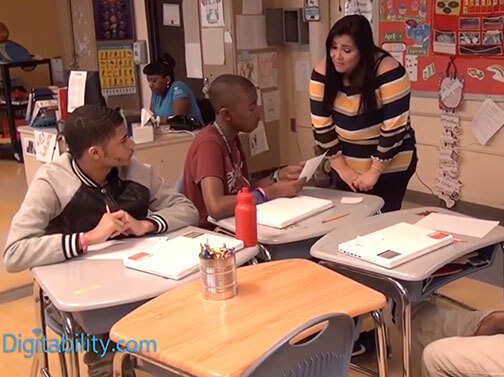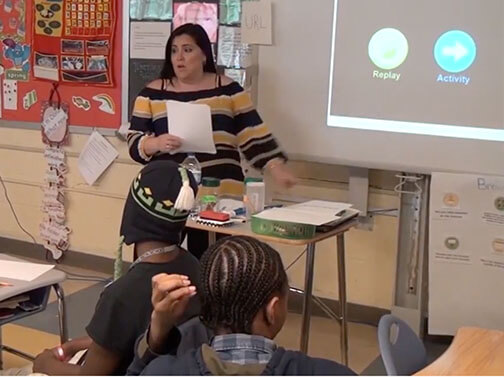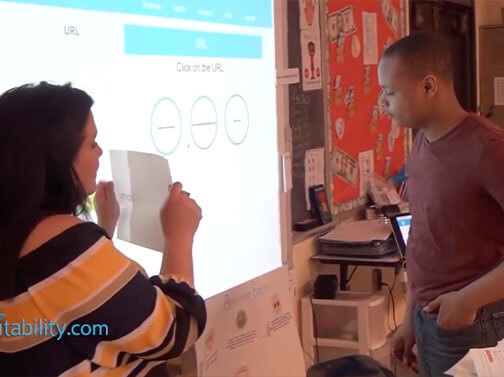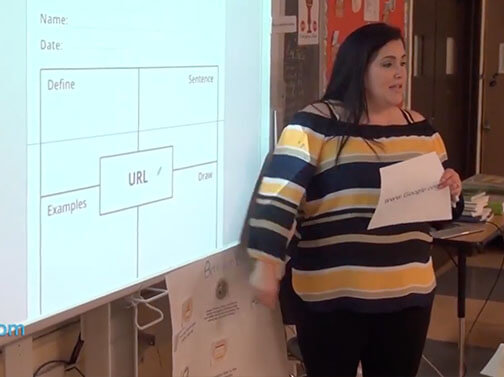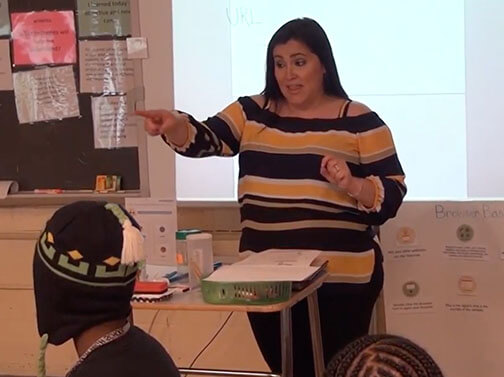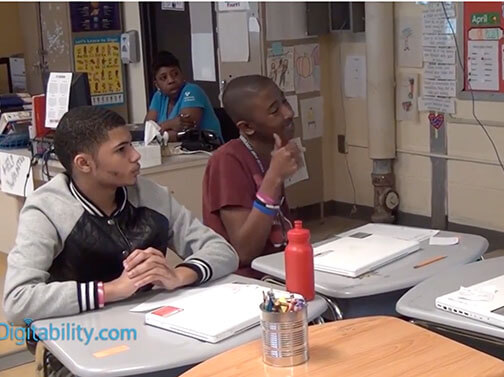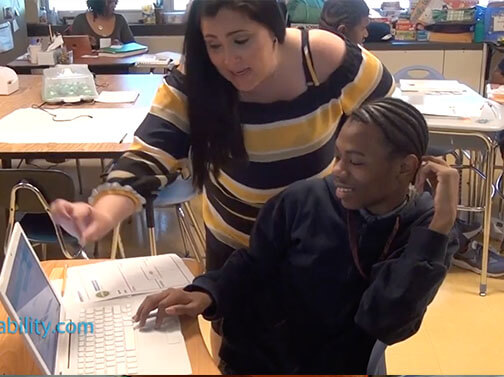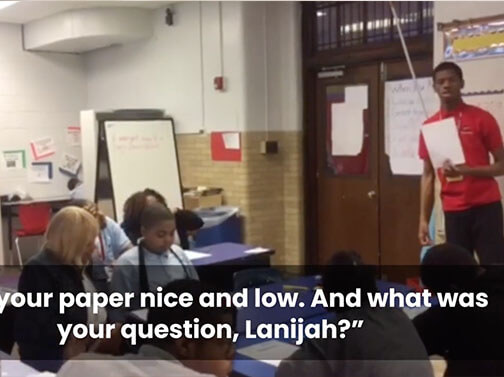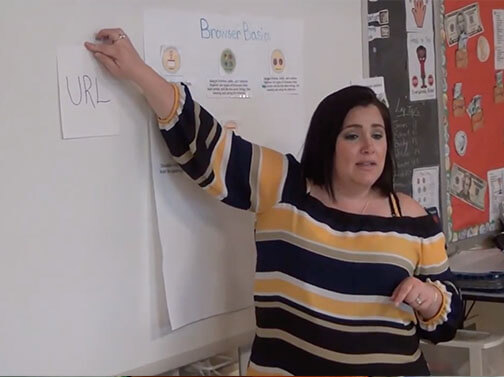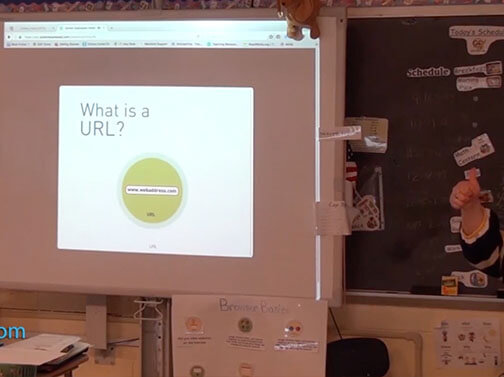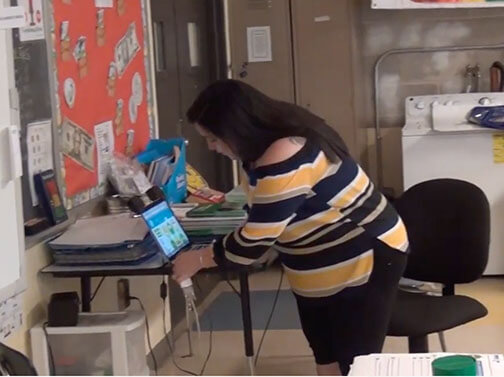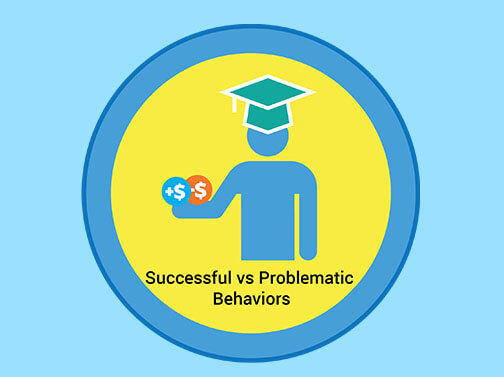Students with autism and other cognitive disabilities have complex needs. Their path to preparing for today’s modern workplace involves many moving parts. Digitability uses the best, evidence-based practices for transitioning students to their independence.
Positive Reinforcement
Positive Reinforcement is streamlined throughout the entire Digitability program. As a recurring evidence-based practice embedded in every Digitability lesson plan. Learn more
Self Regulation
Self Regulation is built by the student as they go through the Digitability program. It is important for a student's independence in and out the workplace.
Workplace Communication
Workplace Communication is implemented to students during the main curriculum and is then amplified during any of the Digitability Work-Simulations. Learn More
Activating Prior Knowledge: Warm-Up.
It's important to engage multiple students, and access their prior knowledge. Learn More
Accessing Prior Knowledge: Guided Watching.
Teachers can increase the number of questions asked, and accessing their prior knowledge. Learn More
Auditory Processing and Functional Workplace Behavior: Exit Ticket.
Students presenting interpret and repeat feedback they receive from each student using the phrase, “What I hear you saying is….” Learn more
Classroom Social Economy: Informal Assessment
Teachers use the Social Economy dollar system by using the phrase, "For a Participation Dollar” Learn More
Differentiate Reinforcement to Decrease Assistance: Guided Watching
Assistance can be decreased over time to ensure the internalization and generalization of skills. Learn More
Differentiation & Five Types of Prompting: Warm-Up.
Teachers use differentiation and prompting to increase expressive and receptive language abilities based on individual student levels. Learn more
Differentiation & Inclusion: Exit Ticket.
Teachers can increase their use of supplemental materials to include all students in activities. Learn More
Differentiation & Inclusion: Informal Assessment.
Teachers use differentiation throughout the Informal Assessment section to assess and include all students. Learn More
Expressive & Receptive Language Development: Informal Assessment.
Teachers use verbal prompting to develop expressive and receptive language by using the phrase "what did the video say?" Learn more
Expressive & Receptive Language for Workplace Communication: Exit Ticket
Teachers prompting to increase expressive and receptive language abilities based on individual student levels. Learn More
Five Types of Prompting: Informal Assessment.
Teachers increase their use of prompting methods throughout the Informal Assessment. Learn More
High Impact Strategies & Financial Literacy: Next Steps
Teachers prompt students to write down how much money they have earned this session. Learn more
Immediate Feedback: Next Steps.
Teachers use the Teacher Dollar Tracker to record the earnings called out each time they use the phrase, “Nice work earning a participation dollar". Learn More
Immediate Feedback & Positive Reinforcement: Warm-Up
Teachers use the Social Economy to provide Immediate Feedback and Positive Reinforcement of behavior. Learn More
Immediate Feedback & Positive Reinforcement: Guided Watching
Teachers distribute dollars to students who are attending and following directions by giving a thumbs up. Learn more
Immediate Feedback & Reinforcement: Informal Assessment
Teachers consistently describe the behavior (participation) when awarding dollars. “Nice job earning a participation dollar.” Learn More
Inclusive Learning: Informal Assessment
Every student has the opportunity to earn Digitability dollars and participate at their own level. Learn More
Increasing Assistance: Exit Ticket
Teachers use supplemental materials to include all students in activities. Learn more
Increasing or Decreasing Attendance: Guided Watching.
During the Guided Watching, teachers adjust instruction based on student needs and comprehension. Learn More
Literacy & Language: Informal Assessment
During the Informal Assessment, teachers prompt the whole class to say the key concept together. Learn More
Literacy Support: Guided Activity
Teachers increase literacy of new tech and work-ready vocabulary, by creating a word wall. Learn more
Positive Narration & Reinforcement: Exit Ticket.
When transitioning to exit ticket or other activity, teachers use positive narration: “I like that way [student] is follow directions. Nice job staying on task and earning a dollar!” Learn More
Positive Narration: Guided Watching
Teachers use positive narration to increase time on task attendance and positively reinforce expectations of the given directive. Learn More
Positive Reinforcement and Healthy Classroom Culture: Guided Activity
Teachers can prompt their students to dance when the correct answer is selected, positively reinforcing their success as a class or team. Learn more
Prompting to Increase Auditory Processing and Comprehension: Guided Watching.
Teachers use differentiation and prompting to increase expressive and receptive language abilities based on individual student levels. Learn More
Setting Boundaries for Self-Regulation: Next Steps
Teachers can increase the practice of setting a boundary for students to support self-regulation. Learn More
Social Skills Training & Scripting: Exit Ticket.
Teachers can redirect student dialogue so that socialization & communication is driven by the students and not led by the teacher. Learn more
Student Engagement: Guided Activity.
Teachers increase the level of classroom participation and student collaboration by having students selected for completing the activity survey their classmates. Learn More
Task Attendance, Prompting & Motivation: Warm-Up
Teachers increase motivation and time-on-task attendance, laying the foundation for Workplace Behavior Training. Learn More
Task Attendance, Prompting & Motivation: Guided Watching
Teachers can use the Thumbs Up engagement strategy to increase motivation and time-on task attendance. Learn more
Time-On-Task Attendance: Exit Ticket.
Teachers utilize a timer to increase attendance to completing tasks within a specific time-frame. Learn More
Professional Development.
Customized for each teacher's experience level with evidence-based practices. Learn More
Behavior.
Digitability teaches workplace behavior and financial literacy in one program. Learn more
Want to Learn More about Digitability?
Digitability is the only web-based curriculum, backed by science, that teaches digital literacy, social skills and job-readiness to people with a cognitive disability so they can become independent self-advocates.

